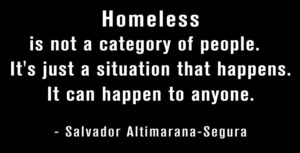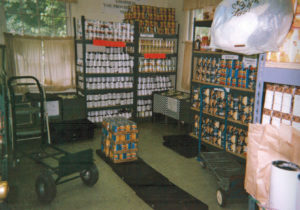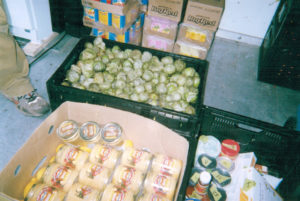I got an appeal letter from the Capital City Rescue Mission Today!

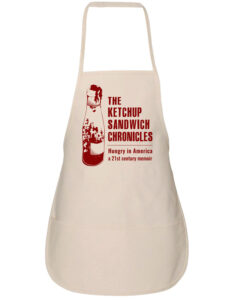
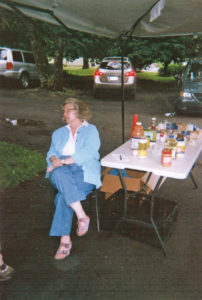
I got excited!
A letter from the Capital City Rescue Mission sent me a thank you note! Just 2 weeks ago, they sent me an appeal letter, complete with return envelope.
And, today, I got a letter from Covenant House.
So what, you say.
Well, so that. That’s what!
When I managed the local food pantry here in Woodstock, I sent out appeal letters every year to a few thousand people. I never, ever, saw an appeal letter from another food pantry or soup kitchen or halfway house.
My letters weren’t nearly so nice as the ones I got from the Capital City Rescue Mission or Covenant House.
The pantry appeal letters were hand addressed, printed on a copy machine and hand folded.
Our return address on the envelopes appeared compliments of a volunteer hand-stamping each one individually. A volunteer got the return address stamp at the Catskill Art and Office for less than $25.
Our mailers went out each year reeking of poverty. No professional letterhead. No nice paper. They were just an appeal from a group of people who needed to keep going from day-to-day.
But, they worked. Those letters and the follow-up thank-you notes brought in enough money to meet our needs. We always had enough for gas and sandwiches for the staff on the monthly food pantry stocking day.
When Guy dented the fender in his car in our parking lot, we had the money for repairs.
When we showed up in the food pantry one day to distribute food, there were no working lights in the basement of the church.
I never quite figured out what happened. But this I do know: Richard Spool arrived in just a few minutes and dealt with the problem. We had enough $$$ to get all the parts we needed at Houst.
And, this I do know: The hungry people were fed, the lights were fixed, Richard saved the day, and the account still had a few dollars left.
But, now, back to the story.
Well, today I did. The appeal mailer came in about 2 weeks ago and I quickly sent a check and a copy of my book (for encouragement).
Today I got a thank-you with another self-addressed envelope from the Capital City Rescue Mission. (I think I’ll send another copy of my book for them to share. ) I’m going to send along another check. I’m anxious to see how this plays out.
Meanwhile, if you are a food pantry, soup kitchen, halfway house and need money, you can learn all my secrets starting on page 196 of my book, “I Don’t Hang Out in Churches Anymore”. I held nothing back. If you read this information, you’ll have the recipe for fundraising success.
In my heart, I want every pantry, soup kitchen, and halfway house to be rich enough to feed everyone who needs the food. I want the food to be top quality – the best.
And, I want every pantry to have enough $$$ to fix the cars and trucks and the lights in the building.
I learned these secrets at Rowe in Vermont when Kim Kline gave her annual talk.
If you feel you can’t take my word for all this success, get Kim Kline’s books and read them. Or, better yet, attend one of her weekends (when the pandemic is over).
Remember, in our country, there is no excuse for anyone to go hungry.
If you’re reading this post and you don’t work for a pantry or soup kitchen, you don’t have to wait for a mailer. All you have to do is contact a food pantry and make a donation.
You don’t have to send a check. If you want, you can hold a food drive and then haul over all the food you gathered. The important thing is that there are many ways to support those who feed the hungry.
And, lately, there are more and more hungry people than we ever thought possible. Your help and support will be appreciated.
Thank you for your generosity and thank you for reading this article.
If you liked this blog post, please refer it to your preferred social media network.
Thanks again!
Thurman Greco
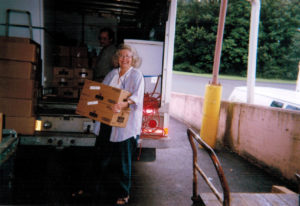
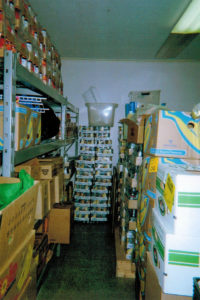



Miracles – Because Hunger is Not a Disease

Miracles happened in the food pantry. It took me a while to realize this and then it took another while to accept that such a thing could happen in the basement of a small town church in Upstate New York.
I sneaked miracle stories in on the blog posts. I sneaked them on the pages of “I Don’t Hang Out in Churches Anymore”. Finally, I gave them their own pages – as much as I had the nerve for anyway, in a short book “Miracles”.
Research on miracles taught me some things.
I learned that miracles often include weeping statues, broken legs healing straight, relics, stigmata, and visions. The pantry miracles included none of those things.
Our miracles never really cured anyone. I never saw a statue weep, and no one came down with stigmata.
Instead, they showed us all how to grow and love and forgive. It was giving away the food that was the tip off for me.
As far as I can tell, the food pantry miracles were not the result of prayer.
God just showed up and brought food. Once he came disguised as a fireman. Each miracle was a complete surprise, a unique and different event. God came when the pantry shelves were bare and the lines were long.
I don’t think the miracles proved that any of the shoppers or volunteers were more faithful than anybody else in town. Frankly, I think that some of us saw the miracles as coincidences or something.
However they were seen, these events made an impact on a small number of people who saw them as they happened.
The clincher for me occurred when I finally realized and accepted a few basic things:
Carloads of food never showed up when we didn’t need it.
Boots never appeared on the shelves disguised as toothpaste in the summertime.
Nobody ever brought a handful of nails to fix the barn when the wall wasn’t falling.
Two books appeared on my desk out of the ethers: “Miracles” by Tim Stafford and “Looking for a Miracle” by Joe Nickell gave a feeling of legitimacy to my thoughts and memories.
Because of Tim Stafford, I wrote my book entitled “Miracles”. He was direct about a few things – one of them being that people should not spread “miracle gossip”. Because of his feelings about what he called “miracle gossip”, I’m compelled to relate the pantry miracle stories.
To sneak them in blog posts does not do them justice.
Thank you for reading this blog post. Please refer it to your favorite social media network.


Thurman Greco


